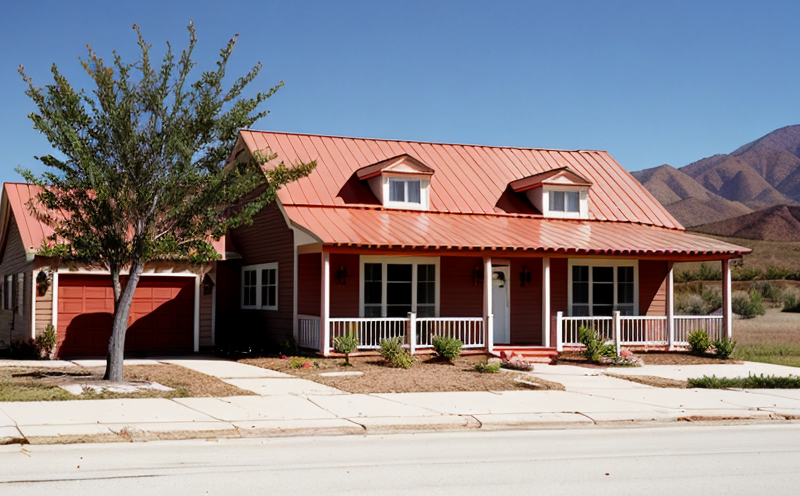Thermal cycling vs. thermal aging
The Thermal Cycling vs. Thermal Aging Dilemma Why Businesses Cant Afford to Compromise
In the world of material science and product development, understanding how materials perform under extreme temperature conditions is crucial for ensuring their reliability and longevity. Two laboratory services that play a vital role in this process are thermal cycling and thermal aging. While often used interchangeably, these techniques serve distinct purposes and offer unique benefits. In this article, well delve into the advantages of using thermal cycling vs. thermal aging, highlighting why businesses cant afford to compromise on their choice.
What is Thermal Cycling vs. Thermal Aging?
Thermal cycling and thermal aging are laboratory services designed to simulate real-world conditions by exposing materials to repeated temperature cycles or prolonged heat exposure. The primary difference lies in the duration and frequency of the temperature fluctuations
Thermal Cycling This process involves subjecting materials to repeated cycles of heating and cooling, typically between -50C to 150C (or higher). Each cycle consists of a specific temperature range, with the material exposed for a set period.
Thermal Aging In contrast, thermal aging involves exposing materials to prolonged periods of heat exposure, often at a fixed temperature (e.g., 85C or 105C) over an extended period.
Why is Thermal Cycling vs. Thermal Aging Essential for Businesses?
In todays competitive landscape, businesses cant afford to risk product failure due to unforeseen material degradation. By utilizing thermal cycling and thermal aging services, companies can
Ensure material reliability Predicting how materials will perform under extreme temperature conditions helps manufacturers avoid costly re-designs or recalls.
Meet regulatory requirements Compliance with industry standards, such as those set by the International Electrotechnical Commission (IEC) or the Underwriters Laboratories (UL), relies heavily on thermal testing data.
Optimize product development By understanding material limitations and vulnerabilities, businesses can develop more robust products, reducing the likelihood of premature failure.
Advantages of Thermal Cycling vs. Thermal Aging
Key Benefits of Thermal Cycling
Rapid Testing Thermal cycling enables rapid testing of materials, allowing manufacturers to identify potential issues quickly.
Comprehensive Data This technique provides detailed data on material behavior under extreme temperature fluctuations.
Flexibility Thermal cycling can be tailored to mimic specific real-world conditions or industry-specific requirements.
Key Benefits of Thermal Aging
Prolonged Exposure Thermal aging simulates prolonged heat exposure, enabling researchers to study material degradation over extended periods.
Real-World Simulations This technique accurately replicates the effects of thermal stress on materials in actual operational environments.
Cost-Effective By identifying potential issues early on, businesses can save resources and reduce waste.
Key Benefits of Both Techniques
Improved Product Reliability Thermal cycling and aging ensure that products meet industry standards and withstand extreme temperatures.
Reduced Material Failure Identifying material vulnerabilities enables manufacturers to develop more robust components or substitute materials.
Enhanced Innovation By understanding material limitations, businesses can drive innovation and improve product performance.
QA Section
Q1 What is the primary difference between thermal cycling and thermal aging?
A The primary difference lies in the duration and frequency of temperature fluctuations. Thermal cycling involves repeated cycles, while thermal aging involves prolonged heat exposure.
Q2 How long does a typical thermal cycling test take?
A Test times vary depending on factors like temperature ranges, cycle counts, and material properties. However, most tests can be completed within 1-5 days.
Q3 Can thermal aging be used to simulate real-world conditions?
A Yes! Thermal aging accurately replicates the effects of prolonged heat exposure on materials in actual operational environments.
Q4 What types of industries rely heavily on thermal cycling and thermal aging services?
A Companies across various sectors, including aerospace, automotive, electronics, and energy, require these services to ensure material reliability and compliance with industry standards.
Conclusion
Thermal cycling vs. thermal aging is a critical laboratory service that enables businesses to predict material behavior under extreme temperature conditions. By understanding the advantages of each technique, manufacturers can make informed decisions when choosing between them. Eurolab offers both services, providing comprehensive data and expert analysis to help companies optimize product development and ensure compliance with industry standards.
Dont compromise on your businesss success choose Eurolab for your thermal cycling and aging needs. Contact us today to learn more about how our laboratory services can drive innovation and reliability in your products.




